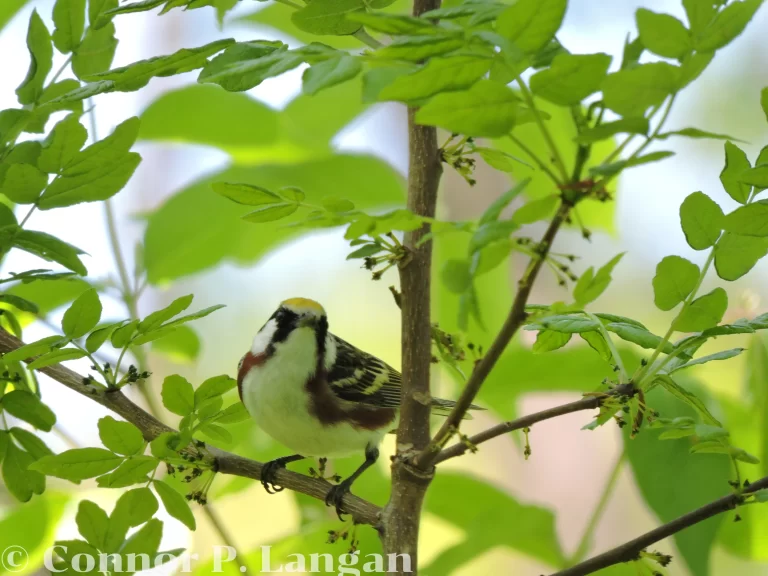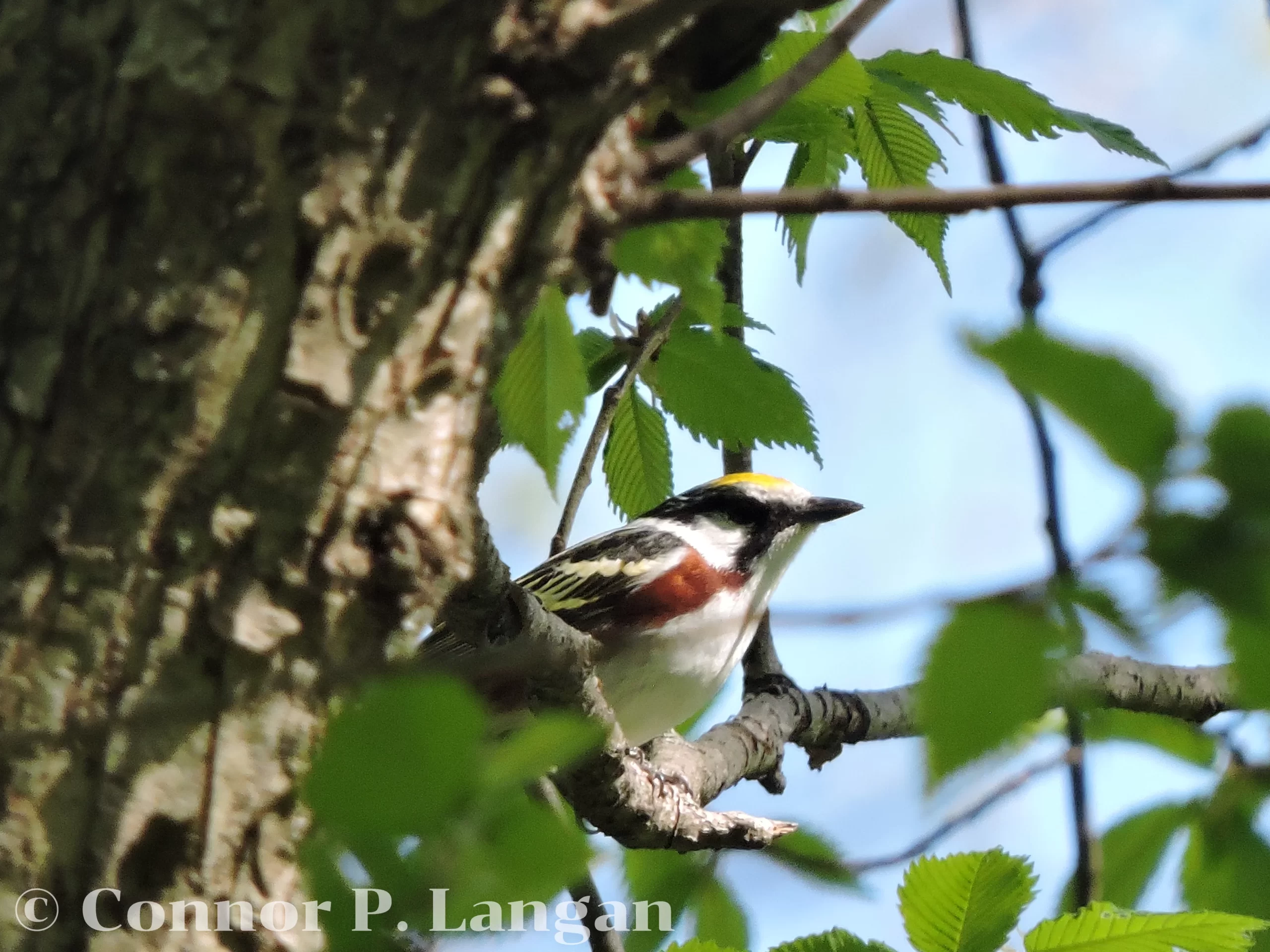Description
Chestnut-sided Warblers are medium-sized warblers with thick bills and medium-length tails.
These birds measure 4.75 to 5.5 inches, and they weigh around 0.5 ounces.
Male and female Chestnut-sided Warblers have subtle differences in plumage during the breeding and nonbreeding seasons. All
Chestnut-sided Warblers have two yellow wingbars and pale, unmarked undersides no matter the time of year.
Both male and female Chestnut-sided Warbler have their namesake chestnut-colored sides during the breeding season. However, only males tend to retain this feature in the nonbreeding season.
Breeding males have dark masks and yellow caps while breeding females have green caps and charcoal-colored facial markings. Both males and females in breeding plumage have backs that are a combination of green, black, and gray.
Nonbreeding birds and immatures have plain faces with white eye rings and green backs.

Behavior
Male and female Chestnut-sided Warblers will each chase away birds that intrude on their territories. These birds commonly forage in mixed-species flocks during migration. They may be solitary or continue to forage among other songbirds during winter.
Diet
Chestnut-sided Warblers are largely insectivorous, eating dozens of bug species. These birds will eat fruit and seeds during migration and winter, but these foods do not comprise a large part of their diets.
Habitat
Chestnut-sided Warbler seek out early successional habitats during the breeding season. Areas recovering from a clearcut, fire, or other form of disturbance are sought by these warblers. Though these habitats may be found in urban areas, Chestnut-sided Warblers avoid nesting near human settlements.
Look for these birds in an assortment of forested areas during migration. They may appear in parks, woodlots, mature forests, and scrubby habitats. Chestnut-sided Warblers seek out cacao or coffee plantations, early successional habitats, and forested areas in the winter.
Range
These warblers breed in the upper Midwest, the Northeast, and eastern Canada. They spend winters in the Caribbean, Mexico, Central America, and northern South America.
Breeding
Chestnut-sided Warblers are monogamous by nature, but they tend to select new mates during each breeding season.
Females complete the construction of nests without assistance from males. Nests are placed in shrubs or young trees at a height of 2 to 6 feet.
The cup-shaped nests are constructed from grasses, bark, leaves, and other plant fibers. They are held together using spider web silk.
Females produce one to two broods of young each year, with each clutch containing as many as 5 eggs. Eggs are incubated for as many as 12 days, and the nestlings leave about 10 days later.
Backyard Birding
Chestnut-sided Warblers do not nest in birdhouses or feed from bird feeders. However, these birds would happily rest and fuel up in yards that feature shrubs and trees. Having some sort of water feature provides even more incentive for Chestnut-sided Warblers to stop in your yard.
Population Status
Chestnut-sided Warbler populations have been declining for the last half-century. This species has lost about half of its total population in that time, but around 18 million Chestnut-sided Warblers remain.
Threats faced by Chestnut-sided Warbler include habitat loss and degradation, cat predation, and collisions with structures during migration.

